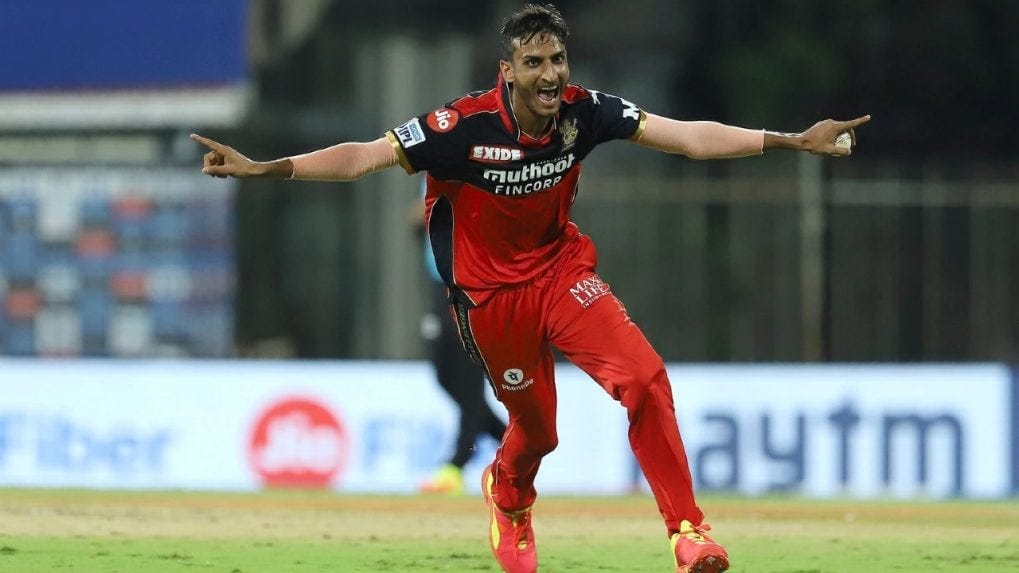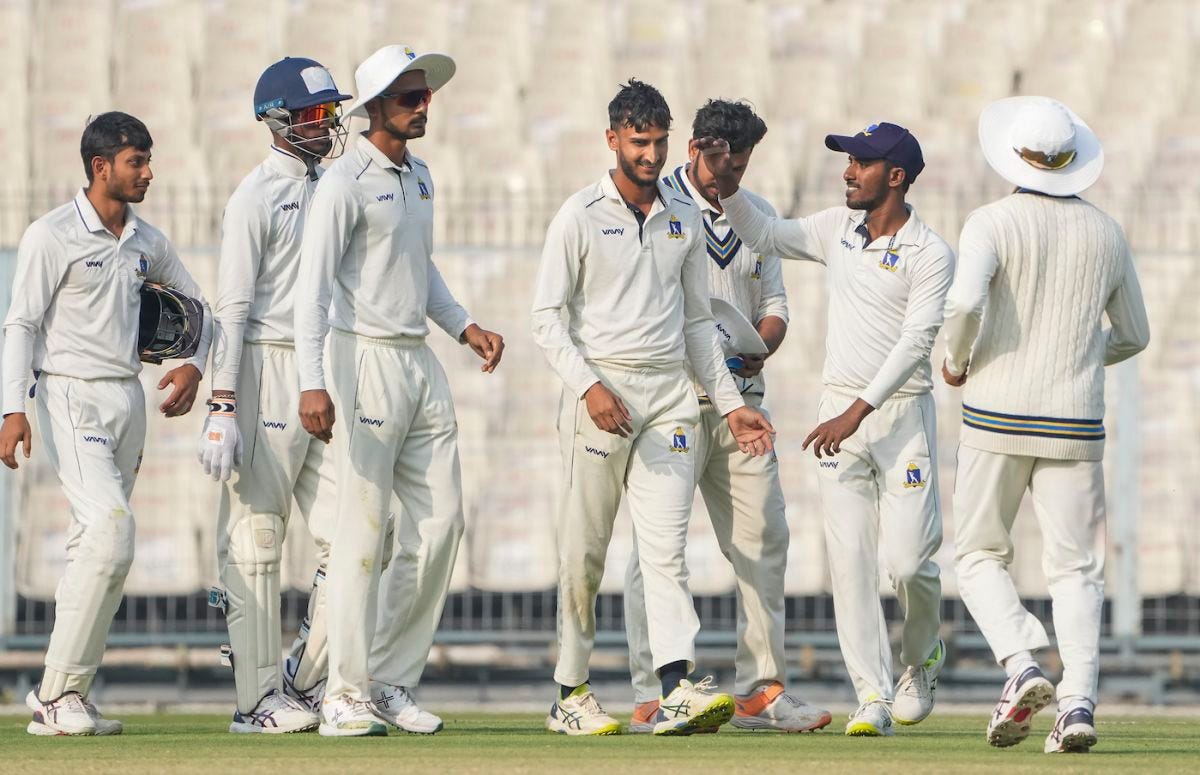It's easy to infer that "Don't judge a book by its cover" advises against deciding on the value of something or somebody, based solely on appearance.
Ironically, I disregarded this advice just a week ago, making a similar judgement in a previous column. My opinion was purely subjective and lacked sufficient depth of consideration. It was only a brief encounter with the subject; however, it was misguided in context. I hope to rectify this today.
So, with thanks to a well-read subscriber, and an informed Indian journalist, I wanted to delve deeper into my comments on Shahbaz Ahmed, particularly my reference to a recent IPL game where, regrettably, for him, he was not at his best.
SpeakingNick is a reader-supported venture. Free and paid versions are available. The best way to support me is by taking out a paid subscription.
Our reader saw the column on Shahbaz in The Patriot, a relatively young paper that is part of the Delhi Press scene. The author, his friend, is Khurram Habib—the associate editor at The Patriot. A link to the full article is in the footer.
Initially, my previous column intended to highlight the apparent lack of accountability in T20 matches, specifically the IPL—the richest T20 franchise league in the world. Several players were on my mind—interestingly, Shahbaz was not one of them. My focus was mainly on international players, not Indian players—after all, the IPL has afforded many Indian players significant and encouraging exposure to the wider cricketing world.
I will say it's prudent to be reflective.
Questioning the viability of Shahbaz's transfer to the Royal Challengers Bangalore (RCB) in the most recent IPL auction had a level of legitimacy at face value. RCB paid 445,000AUD for his services—he's a hard-hitting top-order southpaw who also bowls valuable left-arm finger spin. And, Shahbaz was coming off an extremely productive domestic season.
His IPL 2023 numbers are not flattering—both his batting average and strike rate are low, he's yet to take a wicket, and has a high economy rate. Not an encouraging formula as it stands.
And, to make matters worse, RCB omitted Shahbaz for their last game against the Lucknow Super Giants (LSG)—a struggling player will always hope for that extra chance. The result was a close RCB win and a good deal of peripheral controversy!
Cricket is fickle, and players experience fluctuations in form. Some see their form come and go like the passing of days, while others enjoy a season of uninterrupted good play. Shahbaz Ahmed will come again, and soon, as we know, 'form is temporary, but class is permanent'.
So, with that in mind, I wanted to delve deeper into where Shahbaz Ahmed came from.
Enjoying the read? If you feel like it, I’d love if you’d share this post with your friends! Or, if you received it from a friend, please forward to another.
Shahbaz Ahmed hails from Shikrawa, a tiny village in the Mewat district of Haryana, a state in North India that borders New Delhi on three sides. Reading Khurrram Habib's column, it's hard not to get a sense of the relative remoteness that Shahbaz experienced in his formative years, which is hard to comprehend when the sprawling New Delhi is only 110km away. So near, yet too far. Fast forward—after breaking into the Indian squad, Shahbaz became the first player from the region to represent India and play first-class cricket.
Clearly, Shahbaz was self-taught. His father and uncles played locally and prospered in their own right. This level of cricket, though, was a long way below where the young Shahbaz aspired to be. Throughout his early schooling, he improvised at every fork and took each opportunity to play cricket as if it would be his last.
“He started playing cricket since the age of three. I'd bowl to him before he went to school,” says Uncle Farookh, 49, who teaches classes 6, 7 and 8 in a nearby village school. And no doubt there was plenty of cricket after school once the books were in order.
Like many families involved in cricket, prioritising education or pursuing the sport can morph into a difficult decision. Shahbaz had three cousins, Farookh’s children, who all chose the education route.
In his case, the two entities appear to have meshed nicely together. Shahbaz headed off to study engineering at Manav Rachna International University in Faridabad. It was here that his cricket began to flourish. Not long after he got to Faridabad, he enrolled in an academy and was called twice to the Haryana state Ranji camp. Although he didn’t make the Ranji team, Shahbaz’s star was steadily rising.
The next three years saw Shahbaz play consistently well at the district level—Gurgaon district. However, as is often the case for aspiring cricketers, higher—Ranji Trophy—playing opportunities didn’t materialise.
Critical career decisions are often made without fully understanding their significance at that moment in time. It was a call from cricket friends that positively shaped Shahbaz’s future.
I’m sure you’ve heard it before: "Hey Shahbaz, you’re not going to get a game where you are; why not come and try your luck here?" Here was Bengal—Shahbaz took the bait and travelled east. His friends—Pramod Chandila and Arun Chaprana—should be commended for their normality.
From there, the rise has been rapid. First it was the Tapan Memorial Club—playing alongside Pramod and Arun—then the Bengal state team, where he played all three formats. And then, ultimately, national selection and the IPL with the Royal Challengers Bangalore. Once on the treadmill, there's no stopping a talented player.
To give you the players' perspective, here are some of Shahbaz’s quotes from the article.
"My dad and uncle played at Mewat level for their village. I developed an interest in cricket by watching them. A lot of kids (from Mewat) never took up cricket professionally, but I always played it professionally." A pro before his time!
"I feel Mewat players don’t have a direction. I was lucky; I used to play in Faridabad and Palwal. I saw the good players and knew that I could play in the Ranji Trophy. It was good timing; I moved in the right direction."
He added, "If there had been a district setup (Mewat) or even an academy, cricketers could have progressed, as there is an abundance of talent."
Shahbaz had not played with a leather ball until he left Mewat. "I played cricket with the leather (cricket) ball only outside Mewat."
So, with thanks to Khurrum and our anonymous reader, now I am better educated on the challenges facing many young aspiring Indian cricketers.
And with this in mind, one should temper their opposition to what the IPL is and what it might do to the state of world cricket. Similar to new technologies, change brings opportunities and, in turn, governance or usage issues. With thoughtful regulation, any new entity can co-exist and flourish, but not at the expense of the status quo. There is much work to do in this space.
Already a subscriber, and you’re feeling in a giving mood? Why not gift a subscription; that would be a kind thing to do!
After reading Khurrum Habib’s column, it was intriguing to gain an insight into the Mewati community's perspective on Shahbaz Ahmed's remarkable accomplishments so far. It certainly provides a nuanced view on how his achievements are perceived in the region.
Clearly, there is an underlying passion for sports in the region, just not the infrastructure or avenues to match it. Asad Kamaal, a professor at Government Polytechnic in Hathin, describes the overall prospects as "grim."
Shahbaz Ahmed would disagree with Asad Kamaal. "During his younger days, Shahbaz curated a pitch in a field behind his house because he wanted to play cricket." Twenty years later, he is doing much of the same.
Khurrum Habib tells us, "Shahbaz has recently bought a piece of land and will soon add some more to it to set up an academy for youngsters. That’ll be the first nursery for cricket in the area." And Uncle Farookh adds, "It will require a lot of effort, money, coaches, and equipment." "It might take a few years, but we’ll get there." Just like Shahbaz has done.
And this is the quote from our anonymous reader: "Imagine the pressure on him." "Something we can barely conceive of."
I tip my re-educated hat to Shahbaz Ahmed. And thank you to Khurrum Habib for his insights. A wonderful story. See the link below.
As always, thank you for being here.
https://thepatriot.in/delhi-ncr/shahbaz-ahmed-from-mewats-backwaters-to-the-india-squad-29133
PS. Back to the IPL next week.






Well done again Nick. It’s good to have your opinions challenged, even better to give ground and revisit.
Excellent piece